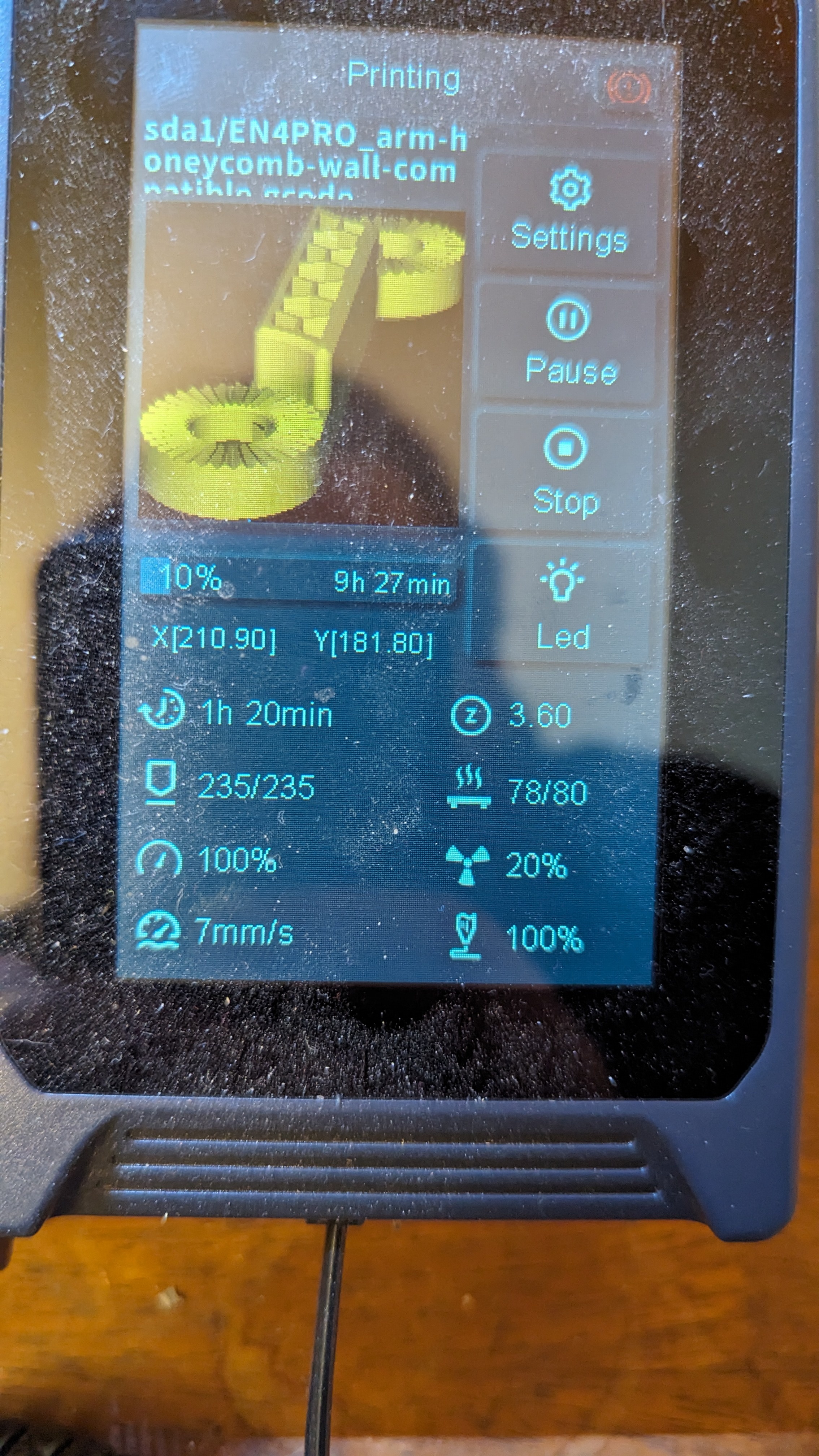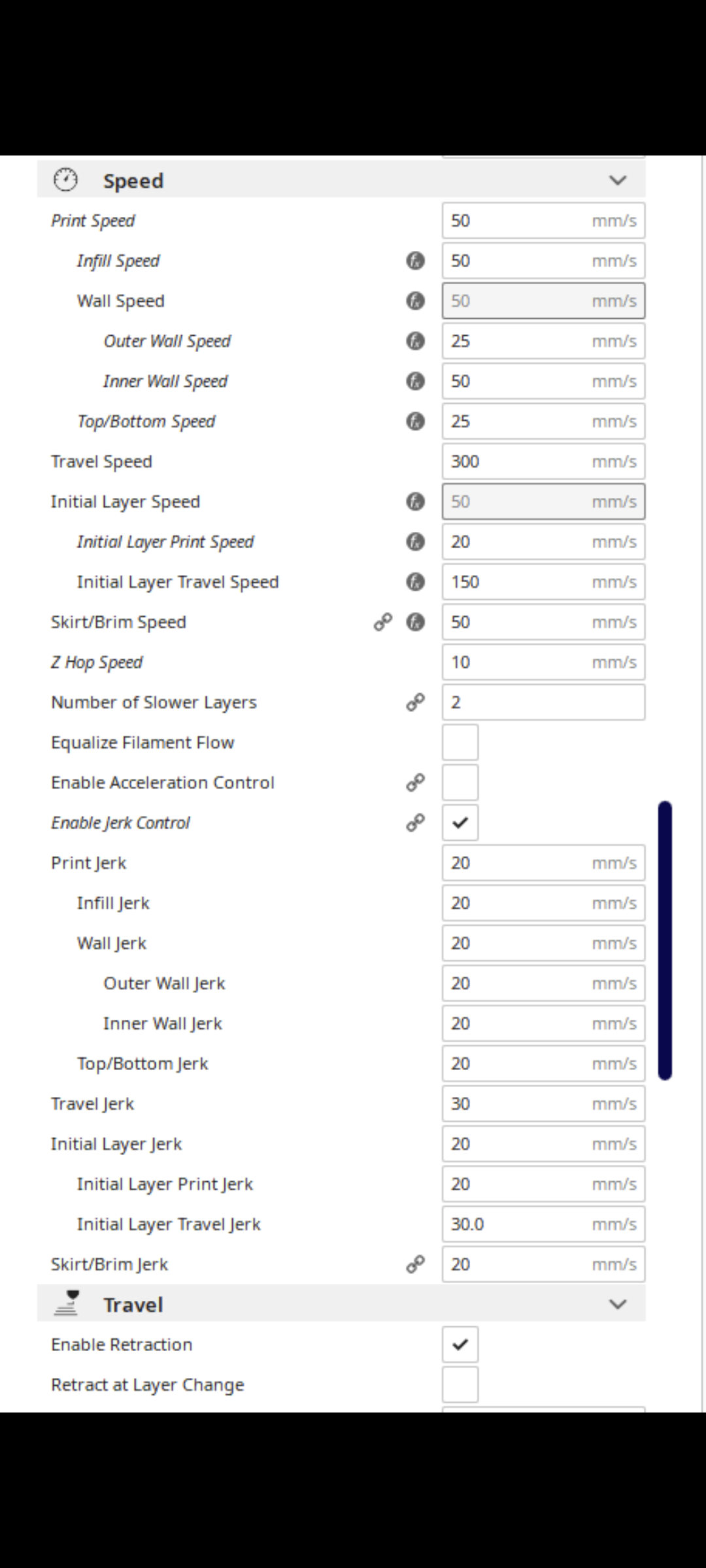Obligatory “I got a 3d printer for Christmas” and I’m absolutely loving it, fell down the rabbit hole head first. However I’m currently dealing with an issue where my Neptune 4 Pro is slowing down to 7 mm/s when it is printing the outer walls despite being setup in Cura to print at 25mm/s. Filament is Overture PETG. Pictures show the Neptune touchscreen with the 7mm/s speed shown in the bottom left and a screengrab of the speed settings from Cura. Any help is greatly appreciated!


There’s a lot that goes into the print speed, including volumetric flow (measured in mm^3/s) and minimum layer time, used for allowing layers to cool enough before printing the next one so the print doesn’t end up a blob. You want to slice the object and then look at where the speed changes in the preview. That will give you an idea of what’s happening. It could also be down to the settings Cura uses for PETG.
Ah! Thank you for the explanation! I will mess around with the slicer previews more, I was actually unaware you could see the speed changes in the preview. I’ve mostly only used it to make sure the printer wasn’t going to try and print in mid air because I dislike printing supports if I don’t have to.
In addition to what other people are saying there are additional factors like minimum layer time. If you find that layers with less material are being done slower it might be because of this.
In general a well tuned profile will prioritize quality over speed. You can bump things up or use a more aggressively tuned profile but your results may vary.
Thank you for the extra info! Im going to start researching more about how to actually use my slicer and tune those profiles.
Yeah. The general speed that you set isn’t necessarily the speed that your printer will print at. That might be the max speed you might get in the best situation or location.
For example, depending on the settings, first layer, outer walls, bridges and other parts of the model cann all be printed at a lower speed to preserve quality. Your print head also needs to accelerate and decelerate for every corner so that it doesn’t overshoot and go where it should. So low acceleration/deceleration play also a part. And the model itself has to be considered in this too because long, mostly straight lines can accelerate to that speed and stay on it for longer.
So what you set as “speed” in the slicer is mostly not what you actually get. Some slicers have a speed display with a colour gradient after you sliced it so that you can see which parts are faster or slower.
The only thing you can really do about it is to do test prints and slowly push the speed up as far as you can to get a decent quality at a nice speed. But you can still end up in parts where you would be fairly slow.
Thank you for the detailed explanation! I actually was unaware that Cura was doing that much work in the background, it’s still just a magic math box that spits out gcode in my mind. I’ll start learning more about my slicer instead of endlessly scrolling thingiverse. Thanks again!

